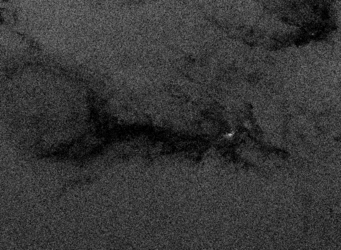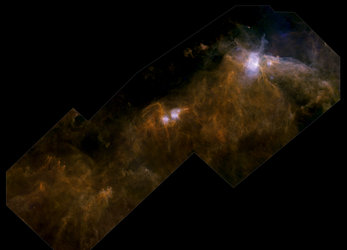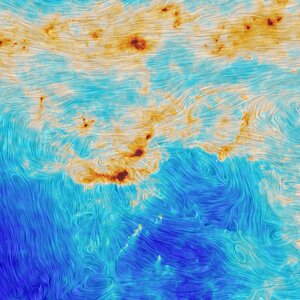Accept all cookies Accept only essential cookies See our Cookie Notice

About ESA
The European Space Agency (ESA) is Europe’s gateway to space. Its mission is to shape the development of Europe’s space capability and ensure that investment in space continues to deliver benefits to the citizens of Europe and the world.
Highlights
ESA - United space in Europe
This is ESA ESA facts Member States & Cooperating States Funding Director General Top management For Member State Delegations European vision European Space Policy ESA & EU Space Councils Responsibility & Sustainability Annual Report Calendar of meetings Corporate newsEstablishments & sites
ESA Headquarters ESA ESTEC ESA ESOC ESA ESRIN ESA EAC ESA ESAC Europe's Spaceport ESA ESEC ESA ECSAT Brussels Office Washington OfficeWorking with ESA
Business with ESA ESA Commercialisation Gateway Law at ESA Careers Cyber resilience at ESA IT at ESA Newsroom Partnerships Merchandising Licence Education Open Space Innovation Platform Integrity and Reporting Administrative Tribunal Health and SafetyMore about ESA
History ESA Historical Archives Exhibitions Publications Art & Culture ESA Merchandise Kids Diversity ESA Brand Centre ESA ChampionsLatest
Space in Member States
Find out more about space activities in our 23 Member States, and understand how ESA works together with their national agencies, institutions and organisations.
Science & Exploration
Exploring our Solar System and unlocking the secrets of the Universe
Go to topicAstronauts
Missions
Juice Euclid Webb Solar Orbiter BepiColombo Gaia ExoMars Cheops Exoplanet missions More missionsActivities
International Space Station Orion service module Gateway Concordia Caves & Pangaea BenefitsLatest
Space Safety
Protecting life and infrastructure on Earth and in orbit
Go to topicAsteroids
Asteroids and Planetary Defence Asteroid danger explained Flyeye telescope: asteroid detection Hera mission: asteroid deflection Near-Earth Object Coordination CentreSpace junk
About space debris Space debris by the numbers Space Environment Report In space refuelling, refurbishing and removingSafety from space
Clean Space ecodesign Zero Debris Technologies Space for Earth Supporting Sustainable DevelopmentApplications
Using space to benefit citizens and meet future challenges on Earth
Go to topicObserving the Earth
Observing the Earth Future EO Copernicus Meteorology Space for our climate Satellite missionsCommercialisation
ESA Commercialisation Gateway Open Space Innovation Platform Business Incubation ESA Space SolutionsLatest
Enabling & Support
Making space accessible and developing the technologies for the future
Go to topicBuilding missions
Space Engineering and Technology Test centre Laboratories Concurrent Design Facility Preparing for the future Shaping the Future Discovery and Preparation Advanced Concepts TeamSpace transportation
Space Transportation Ariane Vega Space Rider Future space transportation Boost! Europe's Spaceport Launches from Europe's Spaceport from 2012Latest

The cat in Orion – or was it a fox?
Thank you for liking
You have already liked this page, you can only like it once!
What is the first creature that comes to mind when you look at the dark cloud in this image? Perhaps a dark kitten with a vivid white nose, front paws stretching towards the right of the frame and tail up towards the left? Or perhaps a fox, running with its mouth open and looking ahead, its vigilant eyes pointing to the right?
In fact, this animal-themed shape belongs to a dark nebula, a dense cloud of gas and dust in the constellation of Orion, the Hunter, with the cat’s nose (or fox’s eye) corresponding to the Orion Nebula Cluster, a star cluster near the famous Orion Nebula, M42. The image is based on data from the first release of ESA’s Gaia satellite, and shows the density of stars observed while scanning that region of the sky.
While this particular nebula is not visible to the naked eye, similar clouds can be seen against the bright background of the Milky Way from dark locations in the southern hemisphere. Finding shapes in these dark nebulas is part of the astronomical tradition of various cultures, from South America to Australia, that include ‘dark cloud constellations’ resembling a variety of creatures in their firmaments.
Launched in 2013, Gaia has been charting more than a billion stars to unprecedented accuracy. This information is extremely valuable to astronomers who are studying the distribution of stars across our Galaxy.
Even in the dark patches where fewer stars are observed, Gaia’s meticulous census provides important information to study the interstellar material that blocks starlight. It is in these dark clouds of gas and dust that new generations of stars come to life.
The first data release from Gaia, published in 2016, contained the position on the sky of more than a billion stars, as well as the distance and motions of about two million stars. Astronomers worldwide are now looking forward to the next data release, planned for 25 April, which will include the distance and motions for the full sample of stars, greatly extending the reach of the previous survey.
So far, Gaia data have been used to study only the most nearby regions of star formation, within several hundred light-years of us. With the new data, it will be possible to investigate in great detail regions that are much farther away, like the Orion star-forming complex, located some 1500 light-years from us, and to estimate the 3D distribution not only of stars but also of the dusty dark clouds where stars are born.
More on Gaia's view of dark interstellar clouds
Acknowledgement: A. Moitinho / M. Barros / C. Barata, University of Lisbon, Portugal; H. Savietto, Fork Research, Portugal
-
CREDIT
ESA/Gaia/DPAC -
LICENCE
ESA Standard Licence

Orion A nebula

Obscured Sirius reveals Gaia 1 cluster

Star density map

Herschel’s view of a molecular cloud















 Germany
Germany
 Austria
Austria
 Belgium
Belgium
 Denmark
Denmark
 Spain
Spain
 Estonia
Estonia
 Finland
Finland
 France
France
 Greece
Greece
 Hungary
Hungary
 Ireland
Ireland
 Italy
Italy
 Luxembourg
Luxembourg
 Norway
Norway
 The Netherlands
The Netherlands
 Poland
Poland
 Portugal
Portugal
 Czechia
Czechia
 Romania
Romania
 United Kingdom
United Kingdom
 Slovenia
Slovenia
 Sweden
Sweden
 Switzerland
Switzerland
























